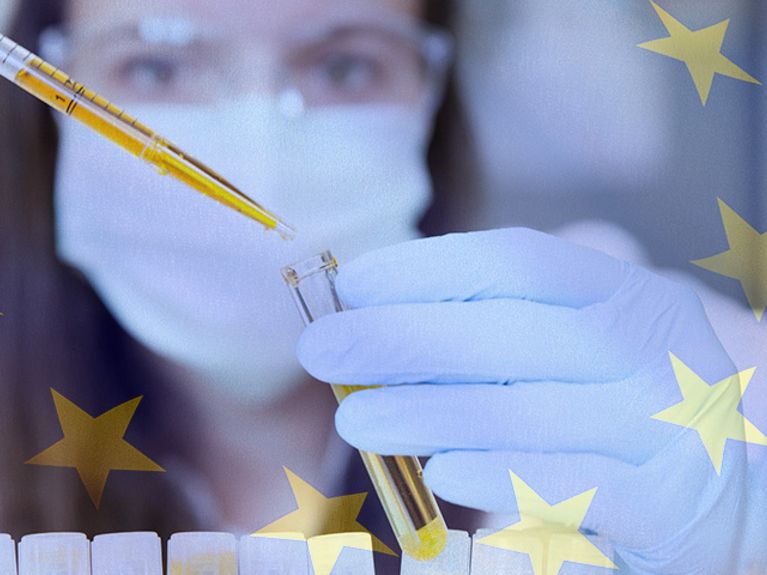European Research Area
"Global challenges do not stop at borders"

Image (collage): Helmholtz/HZI
The European Research Area was created 20 years ago. Now the concept will be on the agenda of the European research ministers in the Council. A comment by Helmholtz President Otmar Wiestler on the successes and opportunities of a unique project.
Otmar D. Wiestler has been President of the Helmholtz Association since 2015. Image: Gesine Born
The European Research Area as a concept is admittedly abstract. Yet the concept is unique, its appeal is great and its future potential enormous. It was created as the equivalent of the European single market. It is also designed to deal with freedom of movement (of researchers) and fair and good framework conditions (for researchers and not least for research itself). Personally, I consider it to be the key to a progressive, cooperative Europe: the European Research Area enables us to work together in entirely new constellations - this is currently becoming very clear in thematic areas such as quantum, health or climate change. Europe offers an inspiring, innovative scientific environment. Moreover, research can be a key driving force, the engine of Europe's future development. Coping with the Covid-19 pandemic and its consequences as well as achieving the climate goals set out in the Green Deal are unthinkable without research.
Therefore: The research area is meant to be and must be filled with life by all of us. Through the excellent research activities in individual institutions - as with Helmholtz. Through participation in European collaborative research projects. However, in my view, this also means that we consciously cooperate closely with institutions and researchers in those EU Member States that are also called "catching up" countries. We cannot avoid recognizing that there are countries in the European Union that not as well positioned as others in terms of research and innovation. These gaps between regions must be bridged wisely so that these gaps do not foster the development of political insuperabilities. This is the only way to build communality. Smart specialization and division of tasks can help to ensure an excellent level of work overall. Together, we in Europe must put ourselves in a position to make the most of and improve our capabilities, This is the only way to create European added value. Communicating this added value and freeing it from its abstractness is, by the way, a major task. For all parties involved. It would be desirable for the Member States to also play this role to a greater extent.
A core element of collaboration in the European Research Area is large research infrastructures - such as supercomputers, particle accelerators, research vessels or aircraft. Transnational access to them enriches the entire European scientific system. Some infrastructures are so ambitious that the Member States can only deploy them jointly. One example of potential for improvement: At the moment, large ESFRI projects often take ten years to complete. In China it takes a fraction of that time. When it comes to joint infrastructure investments, we simply have to become able to act faster.
In competition with the USA and China, the European states must also move closer together in terms of research content and promote initiatives on future topics such as quantum and hydrogen. Through smart cooperation beyond the borders of Member States, Europe can mobilize enormous potential. Yet coordination and alignment alone are not enough. A great opportunity arises from the recruitment of creative personalities - research and development rely on them. We must succeed in developing Europe into a pole of attraction for talent from around world. However, to be truly excellent, to keep talented people here and bring others from all over the world to Europe, we must also give research the proper financial backing.
With good reason, the Heads of State and Government agreed in Lisbon 20 years ago to spend three percent of their gross domestic product on research and development. Even today, some Member States are still lagging far behind, to a disturbing degree. The financial situation is certainly tense in many places. But research in particular offers the opportunity to develop innovations and thus to achieve positive economic effects. This requires investment.
And in this respect, we should always bear in mind: Major challenges such as climate change, digitization and pandemics do not stop at borders. That is why research and development must become a top priority - they once again deserve the attention at Head of State and Government level that was officially given to them back in the year 2000. This is the only way to make a difference for Europe."
Four priorities for the European Research Area
The European Research Area was created in 2000 to facilitate better cooperation. It is now about to be realigned. On 29 September the European Commission therefore published a Communication on the European Research Area. It comprises four objectives:
- Prioritise investments and reforms in research and innovation towards the green and digital transition, to support Europe's recovery and increase competitiveness.
- Improve access to excellent facilitiesand infrastructures for researchers across the EU.
- Transfer results to the economy to boost business investments and market uptake of research output, as well as foster EU competitiveness and leadership in the global technological setting.
- Strengthen mobility of researchers and free flow of knowledge and technology, through greater cooperation among Member States, to ensure that everyone benefits from research and its results.
With 14 actions, the EU aims to implement these objectives together with the EU Member States. The issue will be on the agenda of EU research ministers on 20 October, who will present their Council conclusions afterwards.
Further Details:
https://ec.europa.eu/commission/presscorner/detail/en/IP_20_1749
https://ec.europa.eu/info/research-and-innovation/strategy/era_de
Readers comments